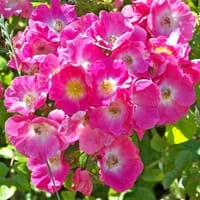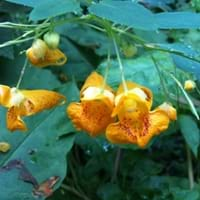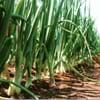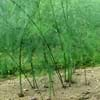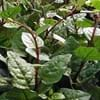Life Span
Annual and Perennial
Annual
Type
Perennial
Fern, Succulent
Origin
Hybrid origin
Africa, Canada, North America, United States
Types
it is a type of rose
impatiens balsaminak, impatiens hawkeri
Number of Varieties
Not Available
Habitat
Not Available
Grassland, River side
USDA Hardiness Zone
5-8
2-11
AHS Heat Zone
10-1
12 - 1
Sunset Zone
A1, A2, A3, H1, H2, 1a, 1b, 2a, 2b, 3a, 3b, 4, 5, 6, 7, 8, 9, 10, 11, 12, 13, 14, 15, 16, 17, 18, 19, 20, 21, 22, 23, 24
Not Available
Habit
Vining/Climbing
Upright/Erect
Minimum Width
Not Available
Flower Color
White, Pink
Yellow, Orange
Flower Color Modifier
Not Available
Bicolor
Fruit Color
Non Fruiting Plant
Green
Leaf Color in Spring
Dark Green
Green
Leaf Color in Summer
Dark Green
Green
Leaf Color in Fall
Dark Green
Green
Leaf Color in Winter
Light Green
Light Green
Leaf Shape
Oval
Elliptic, toothed
Plant Season
Summer
Summer, Fall
Sunlight
Full Sun, Partial Sun
Partial Sun, Partial shade
Type of Soil
Loam, Sand
Loam, Sand
The pH of Soil
Acidic, Neutral
Acidic, Neutral
Soil Drainage
Well drained
Average
Bloom Time
Summer, Late Summer
Summer, Late Summer, Early Fall
Tolerances
Drought
Pollution
Where to Plant?
Container, Ground, Pot
Ground
How to Plant?
Divison, Seedlings
Stem Planting, Transplanting
Plant Maintenance
Medium
Low
Watering Requirements
Water Deeply, Water in morning to avoid prompting diseases
Needs less watering
In Summer
Lots of watering
Moderate
In Spring
Moderate
Moderate
In Winter
Average Water
Average Water
Soil pH
Acidic, Neutral
Acidic
Soil Type
Loam, Sand
Clay
Soil Drainage Capacity
Well drained
Clay, Moist
Sun Exposure
Full Sun, Partial Sun
Bright direct sunlight
Pruning
Prune after flowering, Remove damaged leaves, Remove dead branches
Prune lower leaves, Prune ocassionally
Fertilizers
Fast release fertilizer, Fertilize in early spring, Fertilize three times a year
Fertilize only when soil is poor
Pests and Diseases
Aphids, Black Spot, Caterpillars, Downy mildew, glasshouse red spider mite, Insects, Leaf Hoppers, Powdery mildew, rose leaf-rolling sawfly, Rust, Scale
Bacteria wilt, Downy mildew, Drought
Plant Tolerance
Drought
Drought, Dry soil
Flower Petal Number
Single
Single
Foliage Texture
Medium
Medium
Foliage Sheen
Glossy
Matte
Attracts
Not Available
Bees, Butterflies, Hummingbirds
Allergy
Not Available
allergic conjunctivitis, Asthma, Runny nose
Aesthetic Uses
Showy Purposes, Used for decorating walls, fences, gates, hedges, etc.
Cottage Garden
Beauty Benefits
Perfumes
Poison Ivy
Environmental Uses
Air purification
soil erosion prevension on hill slopes
Medicinal Uses
No Medicinal Use
antimicrobial, treating poison ivy, Upset stomach
Part of Plant Used
Flowers, Whole plant
Bark, Leaves
Other Uses
Used as Ornamental plant
Can be made into a herbal tea
Used As Indoor Plant
Yes
No
Used As Outdoor Plant
Yes
Yes
Garden Design
Cutflower, Feature Plant, Groundcover, Hedges, Mixed Border, Rock Garden / Wall, Topiary / Bonsai / Espalier, Vine
Cottage garden
Botanical Name
ROSA 'American Pillar'
IMPATIENS capensis
Common Name
Climbing Rose, Rambling Rose
Jewelweed
In Hindi
Climbing Rose
Not Available
In German
Kletterrose
Impatiens capensis
In French
escalade Rose
Impatiente du Cap
In Spanish
Rose que sube
Impatiens capensis
In Greek
αναρρίχηση Rose
Impatiens capensis
In Portuguese
Rosa de escalada
Impatiens capensis
In Polish
Climbing Rose
Impatiens capensis
In Latin
Rosa scandere
Impatiens capensis
Phylum
Magnoliophyta
Magnoliophyta
Class
Magnoliopsida
Magnoliopsida
Family
Rosaceae
Balsaminaceae
Clade
Not Available
Dicotyledonous
Tribe
Not Available
Not Available
Subfamily
Not Available
Not Available
Number of Species
Not Available
Importance of Climbing Rose and Jewelweed
Want to have the most appropriate plant for your garden? You might want to know the importance of Climbing Rose and Jewelweed. Basically, these two plants vary in many aspects. Compare Climbing Rose and Jewelweed as they differ in many characteristics such as their life, care, benefits, facts, etc. Every gardener must at least have the slightest clue about the plants he wants to plant in his garden. Compare their benefits, which differ in many ways like facts and uses. The medicinal use of Climbing Rose is No Medicinal Use whereas of Jewelweed is antimicrobial, treating poison ivy and Upset stomach. Climbing Rose has beauty benefits as follows: Perfumes while Jewelweed has beauty benefits as follows: Perfumes.
Compare Facts of Climbing Rose vs Jewelweed
How to choose the best garden plant for your garden depending upon its facts? Here garden plant comparison will help you to solve this query. Compare the facts of Climbing Rose vs Jewelweed and know which one to choose. As garden plants have benefits and other uses, allergy is also a major drawback of plants for some people. Allergic reactions of Climbing Rose are Not Available whereas of Jewelweed have allergic conjunctivitis, Asthma and Runny nose respectively. Having a fruit bearing plant in your garden can be a plus point of your garden. Climbing Rose has showy fruits and Jewelweed has no showy fruits. Also Climbing Rose is not flowering and Jewelweed is not flowering . You can compare Climbing Rose and Jewelweed facts and facts of other plants too.
